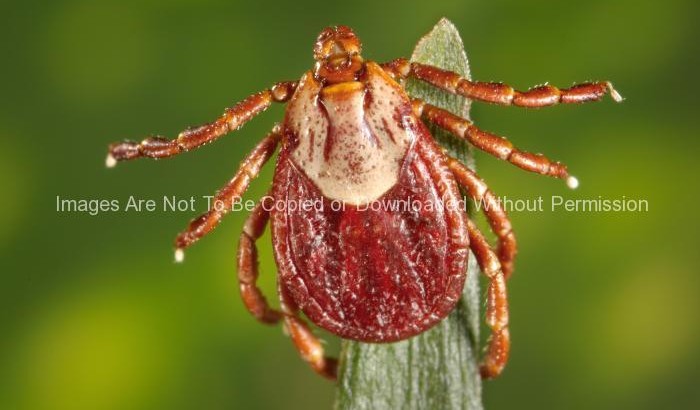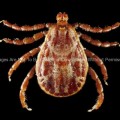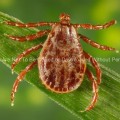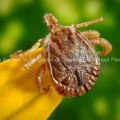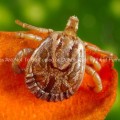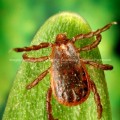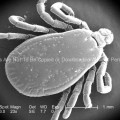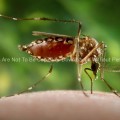This photograph depicts a dorsal view of a female Rocky Mountain wood tick, Dermacentor andersoni. This tick specie is a known North American vector of Rickettsia rickettsii, which is the etiologic agent of Rocky Mountain spotted fever.
Dermacentor andersoni is found in the Rocky Mountain states and in southwestern Canada. The life cycle of this tick may require up to 2 to 3 years for completion. Adult wood ticks feed primarily on large mammals, while the larvae and nymphs feed on small rodents.
Rocky Mountain spotted fever, like all rickettsial infections, is classified as a zoonosis. Zoonoses are diseases of animals that can be transmitted to humans. Many zoonotic diseases require a biological vector (e.g., a mosquito, tick, flea, or mite) in order to be transmitted from the animal host to the human host. In the case of Rocky Mountain spotted fever, ticks are the natural hosts, serving as both reservoirs and vectors of R. rickettsii. Ticks transmit the organism to vertebrates primarily by their bite. Less commonly, infections may occur following exposure to crushed tick tissues, fluids, or tick feces.
